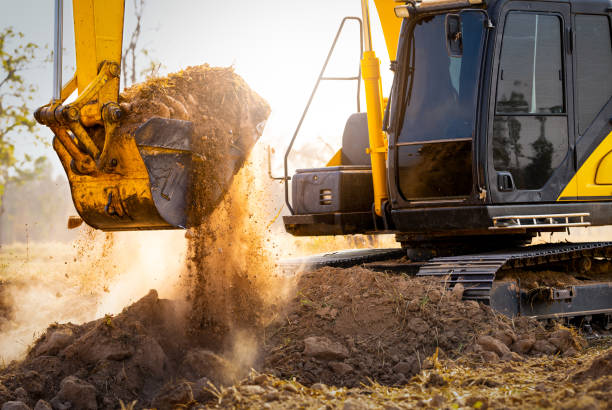Site preparation is one of the most important but complicated tasks in any construction project. It involves various time-consuming processes, like site survey or inspection, ground clearing and leveling, marking boundaries, and installing the proper drainage system. Additionally, you may also need to set up temporary access routes for machinery and workers.
A single mistake or error during the site preparation can lead to far-reaching consequences, like structural issues, delays, safety risks, and unexpected costs. However, learning about the common pitfalls, proper planning, expert guidance, and attention to detail can help you ensure a smooth experience.
Common Mistakes to Avoid When Preparing a Construction Site
Skipping Soil Testing
One major mistake during site preparation is skipping proper soil testing. Without understanding the ground conditions, you may end up choosing the wrong foundation method, which can lead to uneven settling or even structural failure later on. Moreover, the soil may contain moisture, clay, or unstable layers that require special attention.
Before starting any groundworks in Slough, it’s important to carry out detailed testing to make smart decisions about excavation and foundation work.
Poor Drainage Planning
Many people forget to plan proper drainage during site preparation. Without it, rainwater can collect around the foundations, leading to water damage, dampness, or even flooding, resulting in weakening the building’s base.
Planning for water flow early in the process is much easier and cheaper than fixing water damage after construction begins. Shaping the ground or using simple solutions, like drainage pipes, soakaways, or gravel beds, can help you guide water away from the site.
Ignoring Site Access Issues
Some sites have narrow entrances or no clear access for trucks and machines. Ignoring this can delay work or damage nearby roads and paths. It often results in inadequate space for equipment, or materials may be dropped far from the site, adding extra time and labour.
Before starting any work, check if large vehicles can reach the site easily. You can also set up a temporary road to ensure easy access and keep the project moving smoothly.
Not Clearing the Site Properly
Leaving trees, stumps, rubbish, or old structures on-site is also a common mistake that can lead to major problems later. Machines may struggle to work around them, and builders may trip or damage tools. In addition, leftover debris can hide dangers underground, like sharp metal or broken concrete.
Always clear the site completely before other work begins. Remove roots, level the ground, and make sure everything is tidy, ensuring fast work and reducing the chance of delays or accidents.
Forgetting to Mark Boundaries
Working without marking property lines is a common mistake that can cause legal trouble. Builders might go outside the owner’s land, damage a neighbour’s fence, or build in the wrong spot. This could lead to fines or having to move part of the building.
Make sure to carefully check the land’s legal drawings and mark all edges clearly with flags, tape, or posts and give clear instructions to everyone on-site about the area limit.
Using the Wrong Equipment
Using equipment that’s too small or not suited for the job can waste time and damage the site. For example, a small digger might struggle with rocky soil, or heavy machines may sink in wet ground. It can also increase fuel use and risk of injury.
Match the tools to the type of work and ground conditions, and hire the right machines, even for a short time.
Overlooking Health and Safety
Site preparation involves digging, lifting, and using heavy tools. Some builders skip safety checks to save time, but this often leads to accidents, such as people tripping, getting injured, or causing damage. This can stop the project and result in legal issues.
Following basic safety steps, including wearing safety gear, keeping the area tidy, and using signs, can help avoid such issues.
Rushing the Work
Trying to finish site preparation too quickly is a common mistake that leads to bigger problems. If the ground isn’t levelled properly or drainage is rushed, it can cause foundation cracks, uneven flooring, or poor water flow. Additionally, it makes workers more likely to skip checks or take shortcuts.
The best way to avoid this is by giving enough time for each stage. Let the soil settle, and inspect every part before moving on.
Not Hiring the Right Professionals
Site preparation involves technical tasks like levelling ground, managing drainage, and checking soil. Trying to do everything yourself or hiring unskilled workers is not just a mistake but a blunder that often leads to poor results.
Working with experienced teams like WJB Groundworks helps avoid these risks. They have the right tools, skills, and knowledge to handle site preparation properly, from start to finish.
By avoiding these mistakes, you can easily prepare your site for safe construction, timely progress, and long-term stability.








